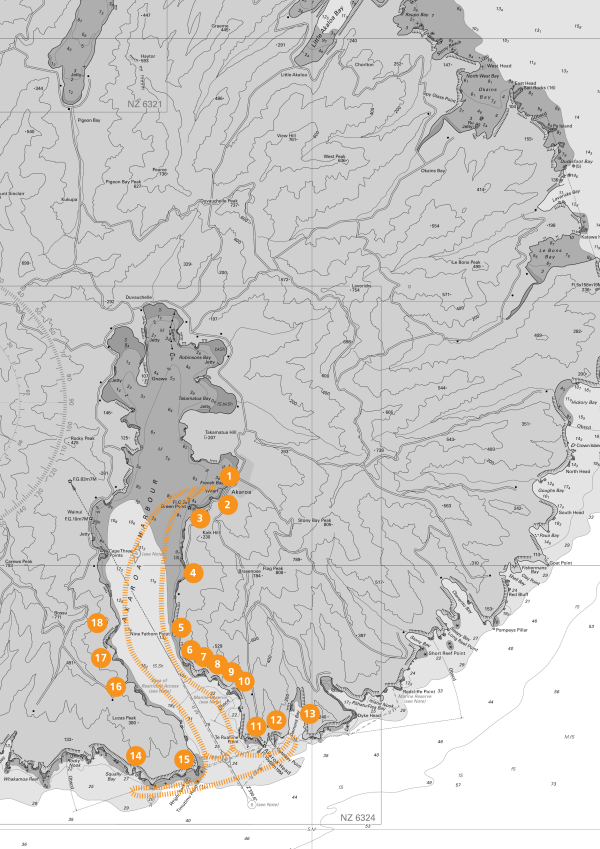Chinese ~
For the itinerary translation, CLICK HERE
For the safety briefing CLICK HERE
French ~
For the itinerary translation, CLICK HERE!
For the safety briefing CLICK HERE
German ~
For the itinerary translation, CLICK HERE!
Cruise Highlights
*Route may vary depending on weather & sea conditions.
1. Akaroa
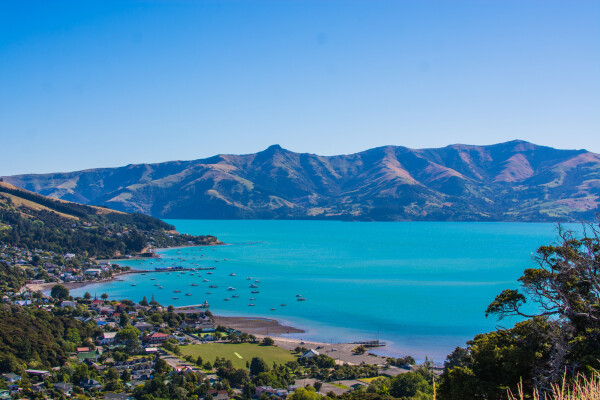
Our journey of discovery starts in the charming and historic village of Akaroa or French Bay.
The French influence of Akaroa stems from the French whaler Captain Langlois arriving in 1838, where he hoped to make it a French base to then colonise the rest of the South Island of New Zealand. He was under the belief that he had bought Banks Peninsula from the local Māori, and went back to France with this news, forming the Nanto – Bordelaise shipping company. Following this, Langlois returned to Banks Peninsula with French and German families aboard the ship ‘The Comte de Paris’, however, just before they reached Akaroa in August 1840 the Treaty of Waitangi had already been signed between the English and the Māori. This treaty proclaimed British sovereignty over all of New Zealand, stopping the French from colonising themselves.
However, the French still established a settlement in Akaroa with around 60 people, although not the large South Island colony they had hoped for.
2. Akaroa’s Historic Lighthouse
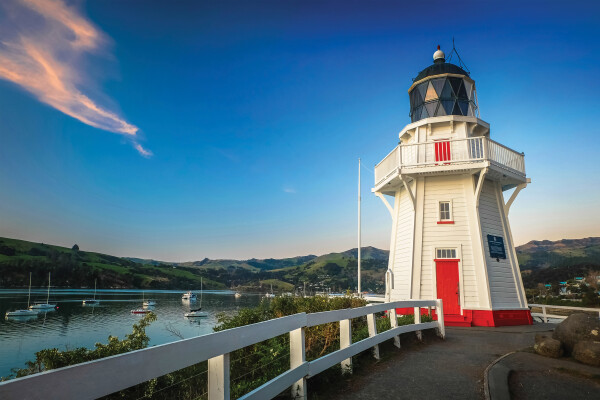
This historic lighthouse was originally located at the harbour entrance and was moved into French Bay in 1980 after being replaced at Akaroa Head by an electronic lighthouse. The original lighthouse is one of our most iconic landmarks here in Akaroa and is one of the few remaining examples of early wooden lighthouses in New Zealand.
3. Takapūneke
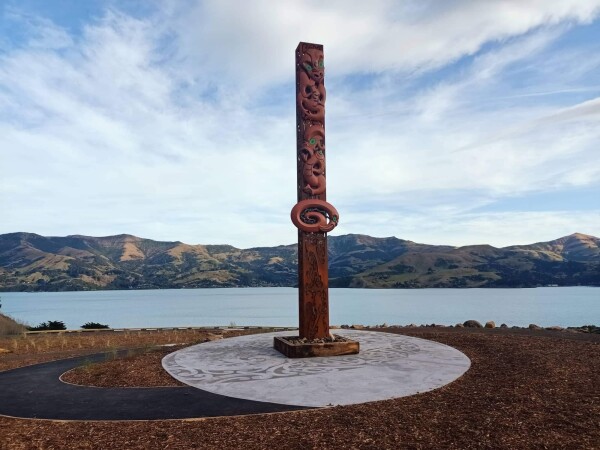
Takapūneke holds a pivotal place in the intertwined histories of both Māori & European settlers. In the early 19th century, it served as a temporary settlement for Te Maiharanui (the Māori chief of Ngāi Tahu), facilitating trade between Māori & Europeans who were eager for flax fiber.
Te Rauparaha, the influential chief of the Ngāti Toa tribe from Kapiti Island, sought vengeance for the killing of his kinsmen at Kaiapoi Pa in 1829. On November 6, 1830, with the assistance of Captain Stewart of the brig ‘Elizabeth', Te Rauparaha successfully captured Te Maiharanui & his party. When Te Maiharanui, his wife, daughter, and other Ngāi Tahu members came on board the ship, they were taken captive by Te Rauparaha and his hidden war party.
The settlement at Takapūneke was attacked, resulting in the death or enslavement of many of its residents by the Ngāti Toa war party. Te Rauparaha then returned to Kapiti with his prisoners. During the journey, to prevent his daughter from enduring torture and enslavement, Te Maiharanui tragically took her life. Later, he was killed by his captors, some of whom were relatives of the chiefs who had died at Kaiapoi in 1829.
The British government was appalled when they discovered Captain Stewart’s involvement, as lawlessness in New Zealand had been a growing concern. These events at Takapūneke in 1830 played a significant role in the historic signing of the Treaty of Waitangi on February 6, 1840, which remains a critical milestone in New Zealand’s history.
For more information please CLICK HERE.
4. Ōnuku Marae
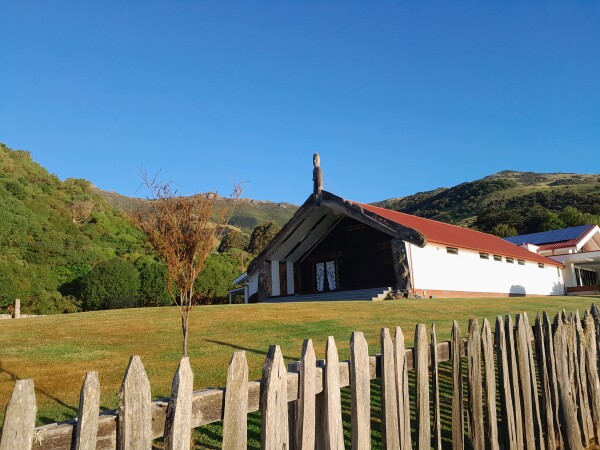
Following Te Rauparaha’s attacks on Takapūneke and later Ōnawe, survivors sought refuge at Ōnuku and cultivated the land there.
On the 30th of May 1840 the Treaty of Waitangi, the official document of New Zealand, was signed here by the two Māori chiefs in Akaroa Harbour at the time.
Ōnuku Marae includes a carved Wharenui (ancestral house) and a new and contemporary Wharekai (dining room). It is often used for large gatherings and meetings. The main carving visible at the front of the Wharenui is that of Te Maiharanui.
Ōnuku also is home to a wonderfully preserved small Church which was opened in 1878 and is one of the oldest Churches in the South Island. It was also the first non-denominational church in New Zealand.
5. Shag Rock
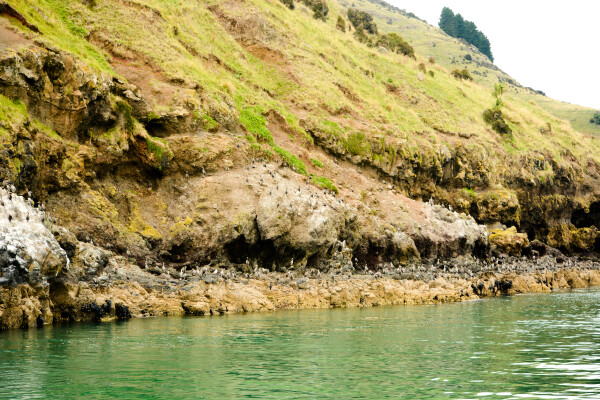
Passing by ‘Shag Rock’ you will notice their guano on the rock face. Shags, or cormorants, are unique seabirds as they do not have oil in their feathers to keep them dry, so they need to go to shore several times a day to dry out. Failing this they would get waterlogged and risk drowning. This area that we know as Shag Rock is perfect as it has the sun for most of the day, so you’ll often see it full of wing-flapping cormorants!
6. Akaroa Marine Reserve
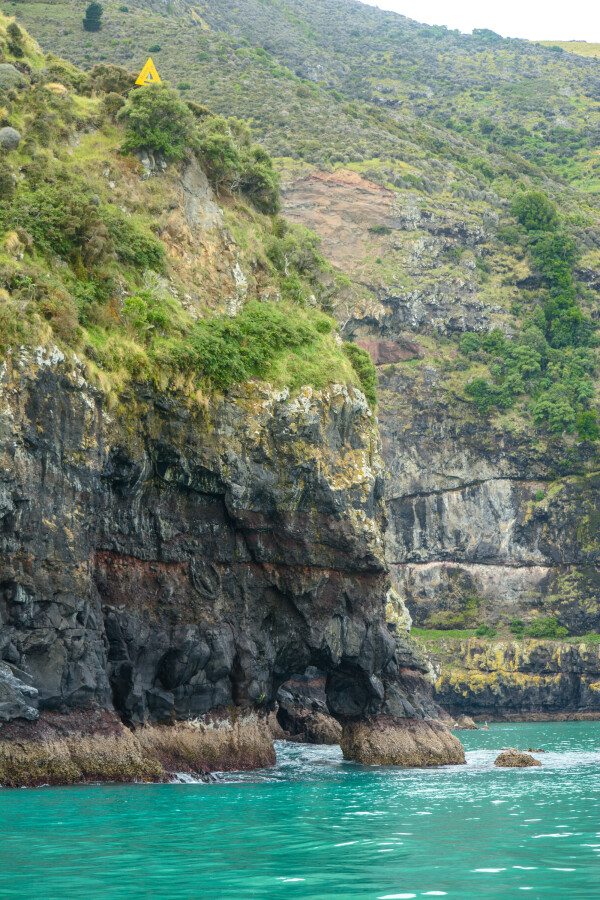
We enter New Zealand’s newest designated marine reserve just before Elephant’s Head. Akaroa Marine Reserve was established in 2014 which means that all marine life is protected and fishing and any removal of living or non-living marine resources is prohibited. The reserve was achieved after 20 years of fighting for the cause by the Akaroa Marine Protection Society, which included the founders of Akaroa Dolphins, Hugh and Pip Waghorn. Increased marine environment protection was needed to ensure this special area for future generations.
7. Elephant Head
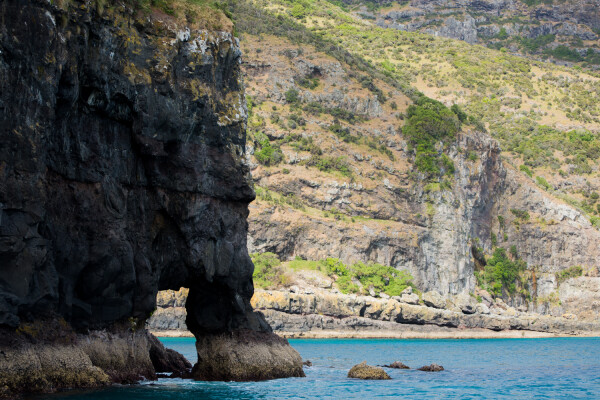
Look closely and you will see the outline of an elephant with its trunk coming down into the water. We are very fortunate to have this special rock formation still standing after the earthquakes.
8. Cathedral Cave
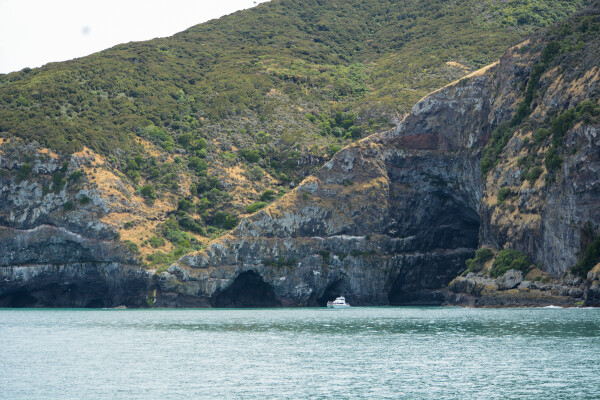
Cathedral Cave was formed following a gas bubble from the volcanic lava flow, which exploded and therefore left a cellar. On the cliff face the different layers of volcanic eruptions are visible, and also the different varieties of birds that have made their nest on the cliffs. The impressive cave is viewable only from the water.
9. Nikau Palm Gully
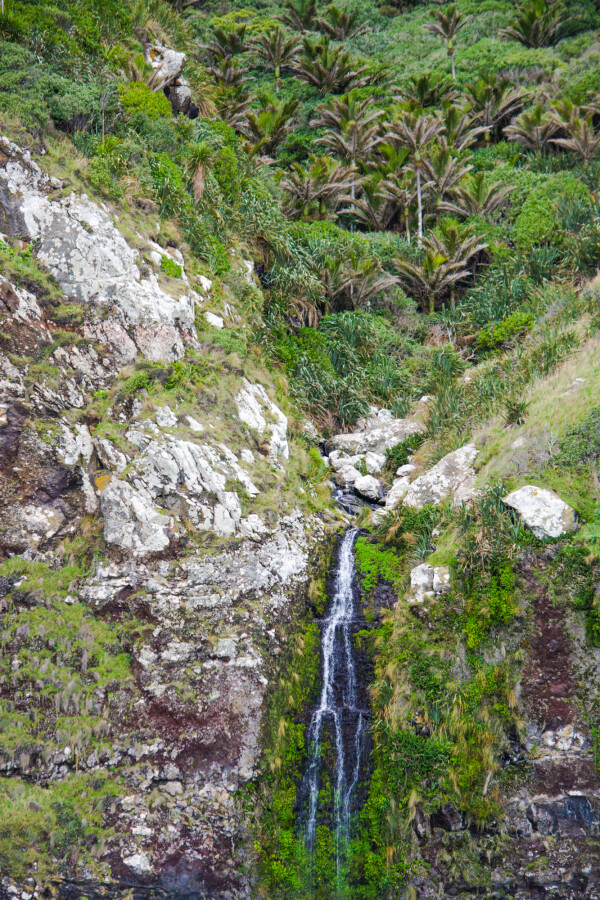
Also known as Paradise Bay, this is the most southern spot in the southern hemisphere where the Nikau palm trees grow naturally (at 43 degrees south). The volcanic rocks trap a lot of heat, which forms its own kind of microclimate, perfect for this special nut-less palm tree.
10. Cliff of Noteriety
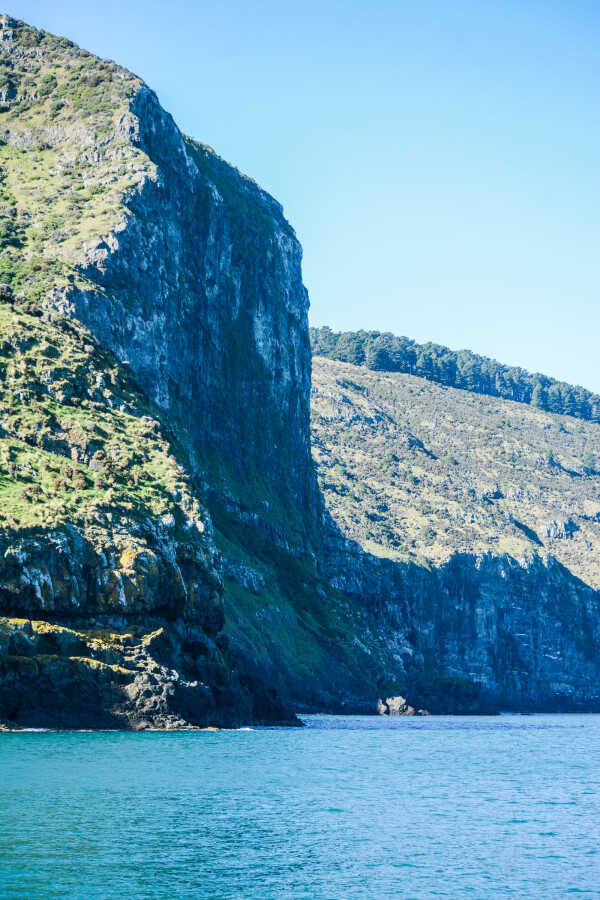
This is the largest cliff on Banks Peninsula and is 270 meters in height. Local legend says that local man Dan Rogers stole from a bank in Little River, and after a long period of being trailed on horseback by the police, was surrounded by fog at the top of the cliff, whilst looking where the police were, Rogers fell off the cliff, never to be seen again.
11. New Lighthouse
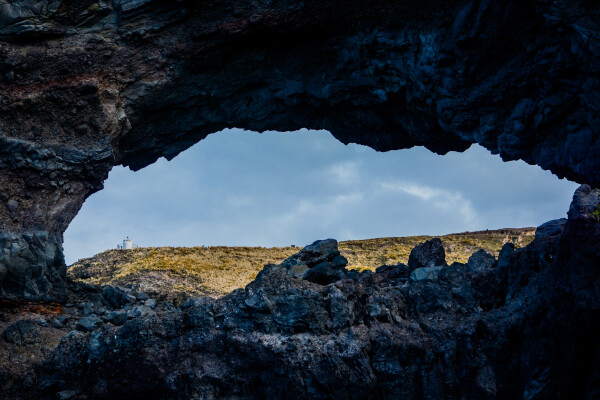
In December 1977 an automatic lighthouse was installed by the marine division of MOT (Maintenance of Traffic ) to replace the manned lighthouse.
12. Haylocks Bay
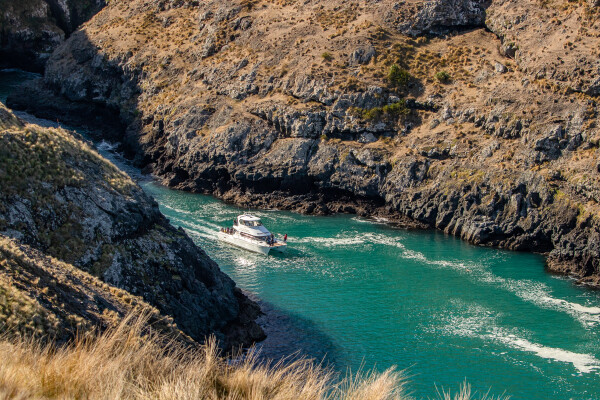
This bay is named after the Haylock family, who owned the land. It is where the original lighthouse was transported in and built on the site a hundred years ago. Today it is part of the marine reserve and home to a New Zealand fur seal colony. From here you can also see the big hole in the rock called “The Spyglass”, through which you can catch sight of the new lighthouse.
13. Damons Bay
Damon's Bay, on the north side of Akaroa Harbour, was named after Captain Damon, who pulled in, thinking he was going into Akaroa Harbour. He was interested in the whale fisheries in the old days and was a man of eccentric habits.
14. Scenery Nook
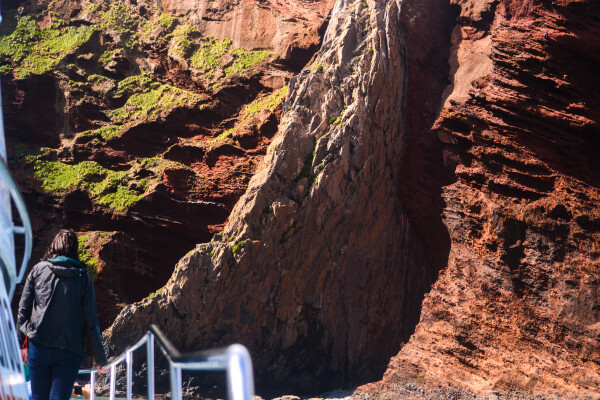
This volcanic amphitheater contains a large arrowhead-shaped rock approximately 1 metre wide. Formed by lava escaping through a spilt in the volcano wall, this is one of the finest examples of a volcanic dyke in New Zealand.
15. Timutimu Head
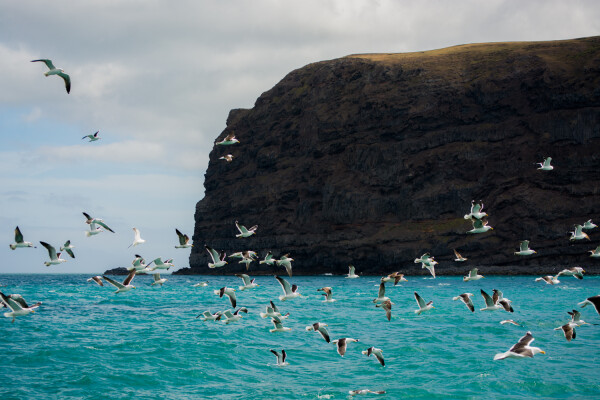
The southwestern headland of Akaroa Harbour is named Timutimu. It takes its name from the steep cliffs there. Timutimu means short stump or to cut off short, and is perhaps a description of the bluff rising from the sea.
16. Seal Bay
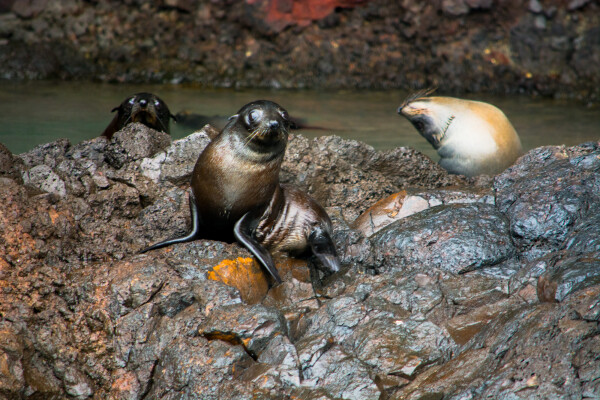
New Zealand Fur Seals are also often sunning themselves on the rocks near Seal Bay.
17. Salmon Farm
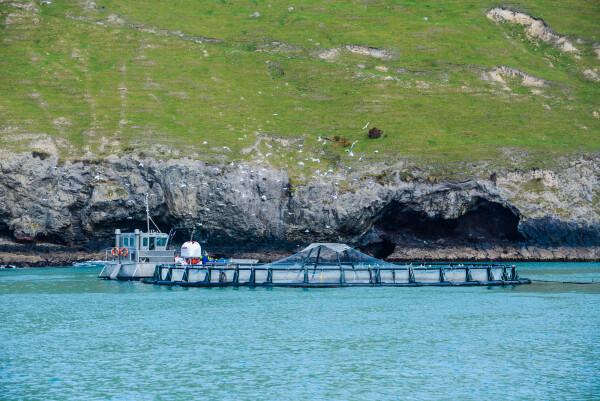
The Akaroa Salmon farm has operated since 1984 and produces around 160 tonnes of salmon per year. The sea-reared salmon is renowned for its superior taste, texture, and consistency over freshwater salmon. In this farm, no antibiotics are used, and the salmon is harvested up to 6 times a week.
18. Paua Pearl Farm
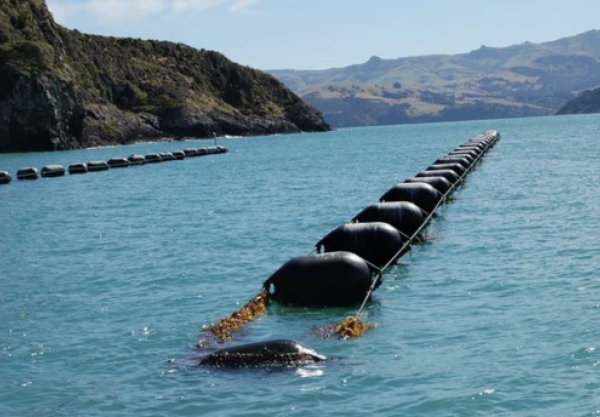
In 1890, the first attempt to use abalone, or “paua” as it’s known in New Zealand was made to grow blue pearls, but the attempt was unsuccessful due to a lack of scientific research. In 1986, thanks to scientific advances and the unstoppable Kiwi spirit, blue pearls finally appeared on the market.
Akaroa Dolphins Wildlife Encounters
We usually see:
Black-backed gulls / Tarapunga
Hector’s dolphins / Tutumairekurai
Little black shag / Kawau
Oystercatcher / Torea
Pied shag / Karuhiruhi
New Zealand fur seals / Kekeno
Spotted shag / Parekareka
White-flippered penguins / Korora
White-fronted terns / Tara
We sometimes see:
Killer whales / Orca
Humpback whales / Paikea
Northern Giant Petrel / Pangurungura
Gannet / Takapu
White-faced heron / Matuku
Mollymawk / Toroa
Yellow-eyed penguin / Hoiho
We have a high success rate with dolphin sightings all year round, as we are in a hotspot for the Hector's dolphins. However, as the dolphins are wild we can never guarantee to see them. If your tour does not see a dolphin, you will be offered another trip free of charge. No refunds will be given in the event of not seeing dolphins.
